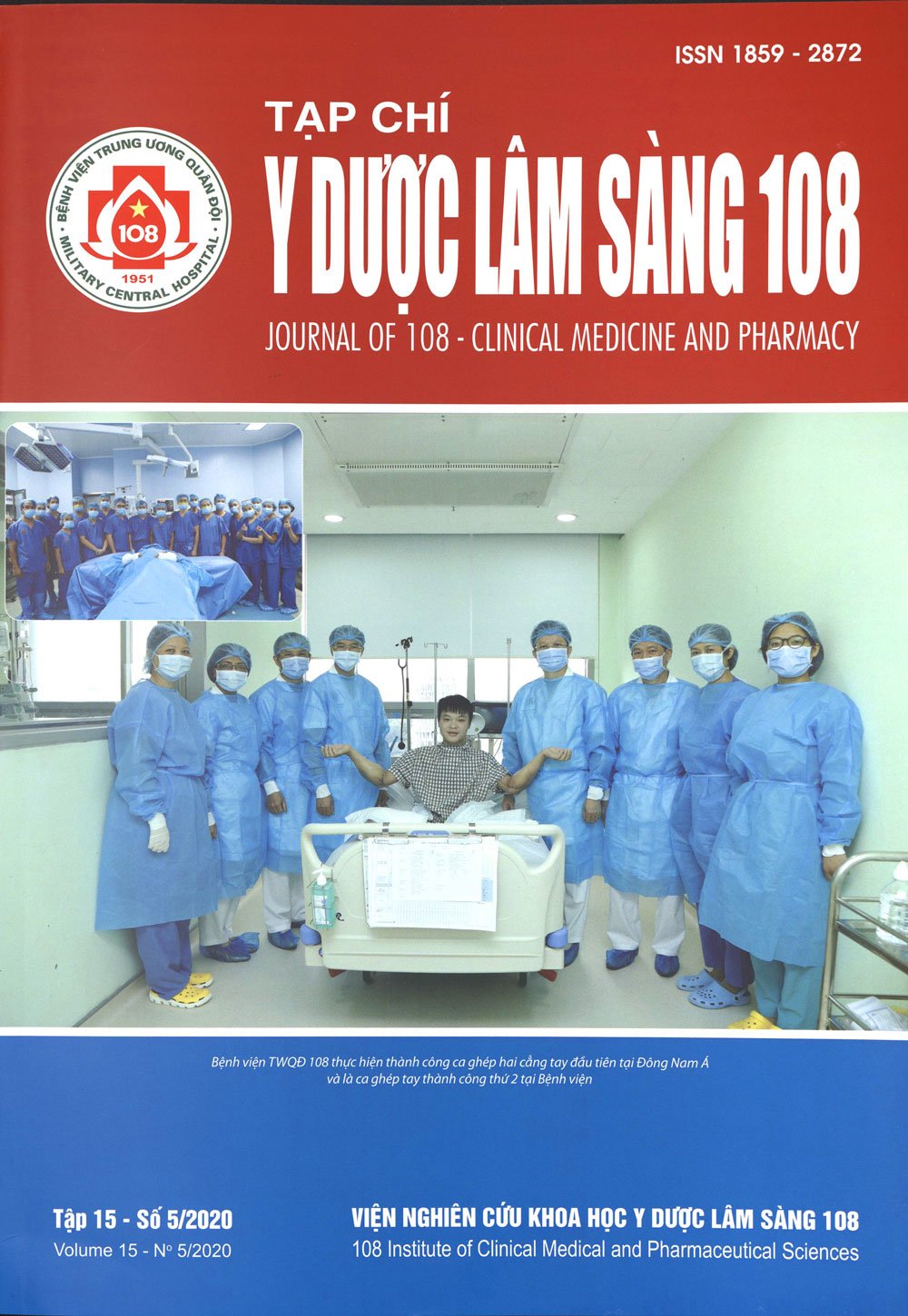Studying the imaging characteristics on thoracic computed tomography in diagnosis of solitary pulmonary nodules larger than 8mm in diameter
Main Article Content
Keywords
Abstract
Objective: To identify the characteristics and malignant indicative features of solitary pulmonary nodules on thoracic multi detector-row computed tomography (MDCT). Subject and method: 165 patients were examined and treated in National Lung Hospital from 11/2016 to 12/2019 that had a solitary pulmonary nodule on chest CT and had results of pathology (after biopsy and / or after surgery): Prospective study, cross-sectional description. All patients were taken chest CT by Siemens 16 or 64 slices (Somatom Emotion 16 or 64, Siemens Healthcare, Germany). Result: Solitary pulmonary nodules had a benign rate of 51.5% and malignancy of 48.5%. The average age of disease 53.5 ± 1.4. The most common age group was 49 - 69 years old (p=0.946). Male/Female ratio ~ 1.8: 1. The oval lung nodules were 73.9%, round nodules 20%. Round nodules had a high rate of benignancy (66.7%) and low malignancy (32.3%), while polygonal nodules or amorphous nodules were predominantly malignant (62.5% and 100.0%) (p = 0.075). The average diameter was 20.4 ± 5.2mm. Lung nodules with average diameter ≥20mm were likely to be 4.64 times more likely to be malignant compared to nodules with an average diameter < 20mm [p <0.001; CI (2.32 - 9.31)]. Solitary pulmonary nodules were mostly peripheral and upper lobe; right lung lesions were more than the left ones with 55.1% and 44.9%, respectively (p <0.0001). The nodule had an internal bubble of 23%, the nodules were caverned or calcified 9.8%, the nodules had a specific proportion of fat, necrosis or sickle (respectively, 3.7, 4.9 and 5.4%). Most lung cancer nodules had irregular margins and spiculate margins or combined with pleural tail sign (72.6%), benign nodules had smooth, smooth edges (90.9%). Conclusion: The solitary pulmonary nodules are clinically common and have a high malignancy rate (48.5%). High resolution MDCT plays an important role in the detailed evaluation of their morphology, position, size and contrast characteristics and provides appropriate diagnosis
Article Details
References
2. Webb WR, Sarles BH (2017) Thoracic imaging: Pulmonary and cardiovascular radiology. Radiology 3: 1093-1217.
3. Garrigós EG, Jiménez JA, José SP (2018)Best Protocol for combined contrast-enhanced thoracic and abdominal CT for lung cancer: A Single-Institution Randomized Crossover Clinical Trial. AJR, 210: 1226-1234.
4. Rehman I, Memon W, Husen Y, Akhtar W, Sophie R (2011) Accuracy of computed tomography in diagnosing malignancy in solitary pulmonary lesions. J Pak Med Assoc 61(1): 48-51.
5. Dąbrowska M et al (2010) Simplified method of dynamic contrast-enhance computed tomography in the evaluation of indeterminate pulmonary Nodules. Respiration 79: 91-96.
6. Gao F et al (2017) Diagnostic value of contrast-enhanced CT scans in identifying lung adenocarcinomas manifesting as GGNs (ground glass nodules). Medicine 96(43).
7. Shi ZT et al (2016) Differential diagnosis of solitary pulmonary nodules with dual-source spiral computed tomography. Experimental and therapeutic medicine 12: 1750-1754.
8. Soardi GA et al (2015)Assessing probability of malignancy in solid solitary pulmonary nodules with a new Bayesian calculator: Improving diagnostic accuracy by means of expanded and updated features. Eur Radiol25: 155-162.
9. Yang LI et al (2017)Assessment of the cancer risk factors of solitary pulmonary nodules. Oncotarget 8(17): 29318-29327.
 ISSN: 1859 - 2872
ISSN: 1859 - 2872
